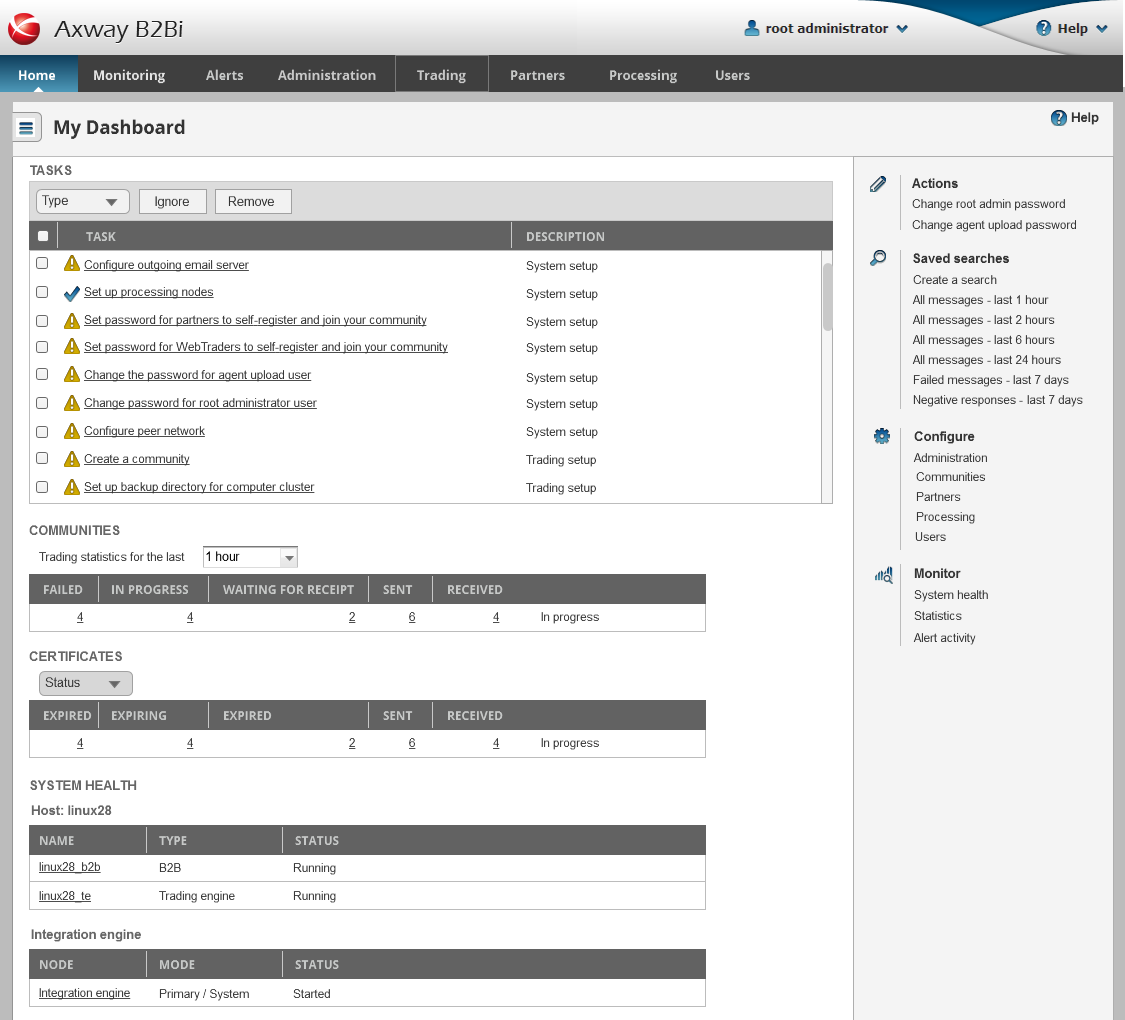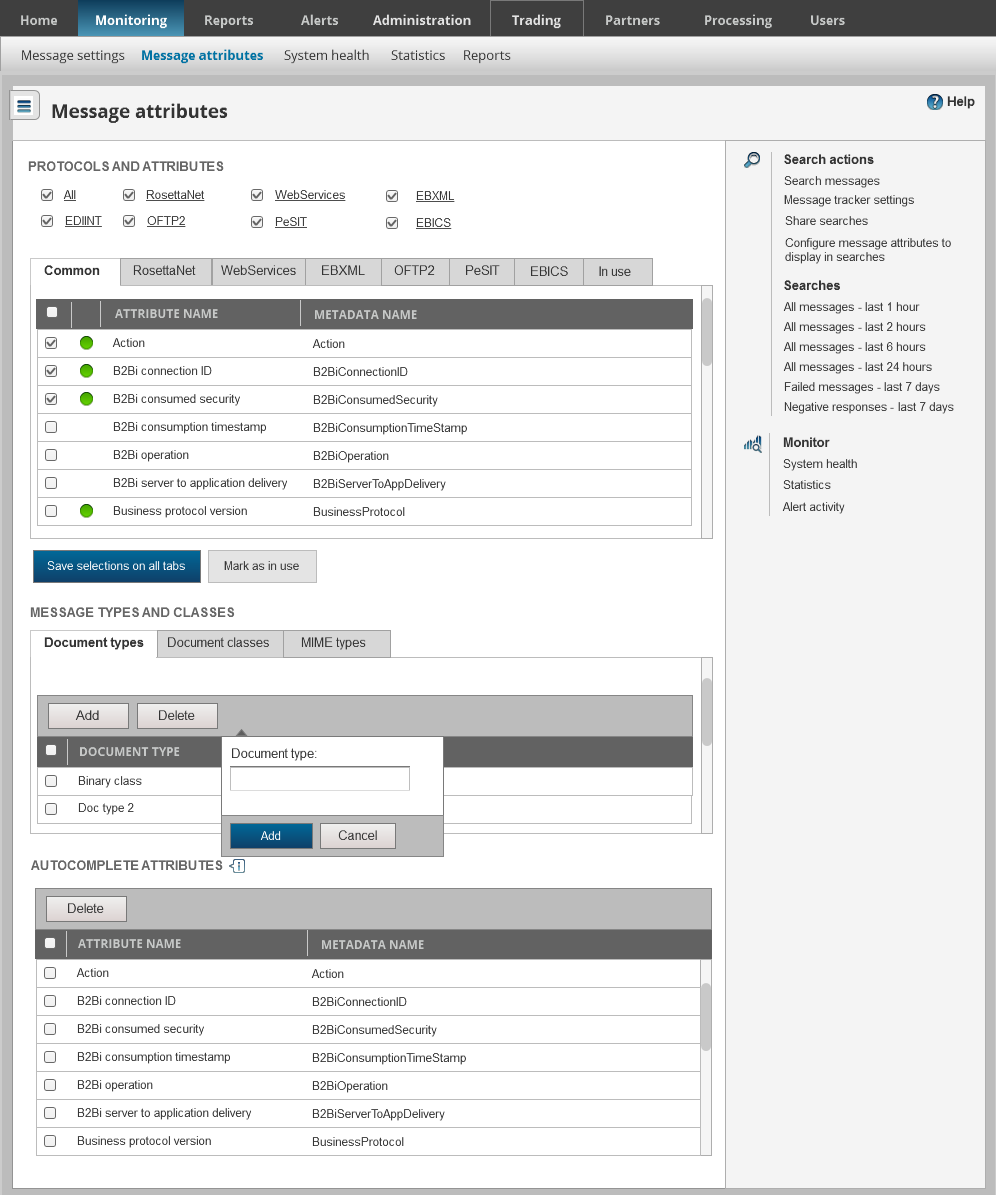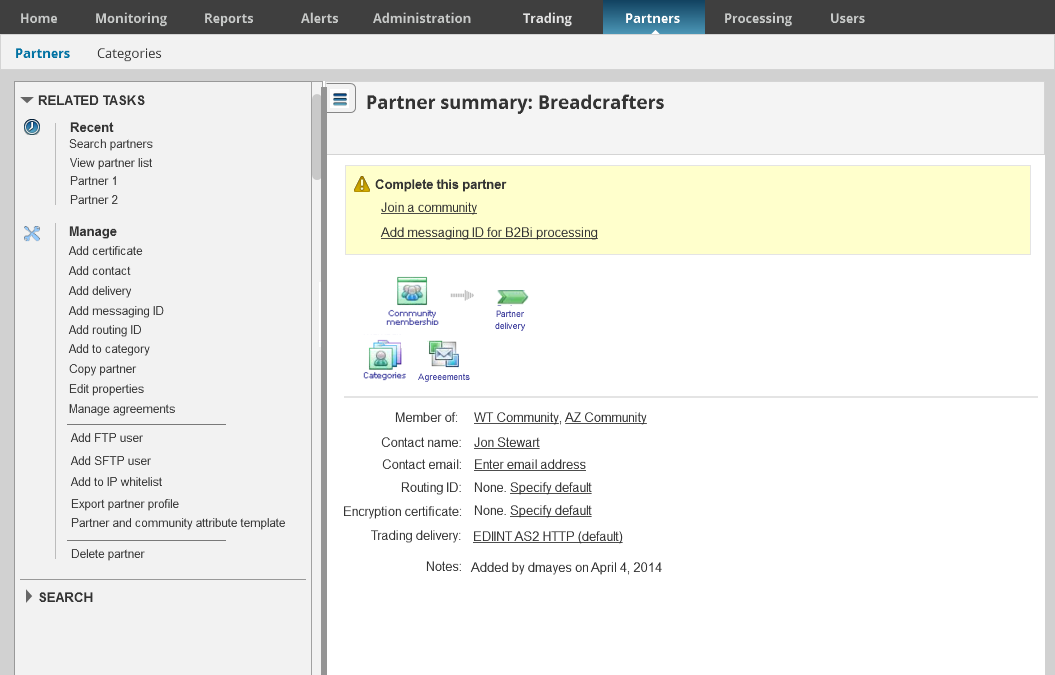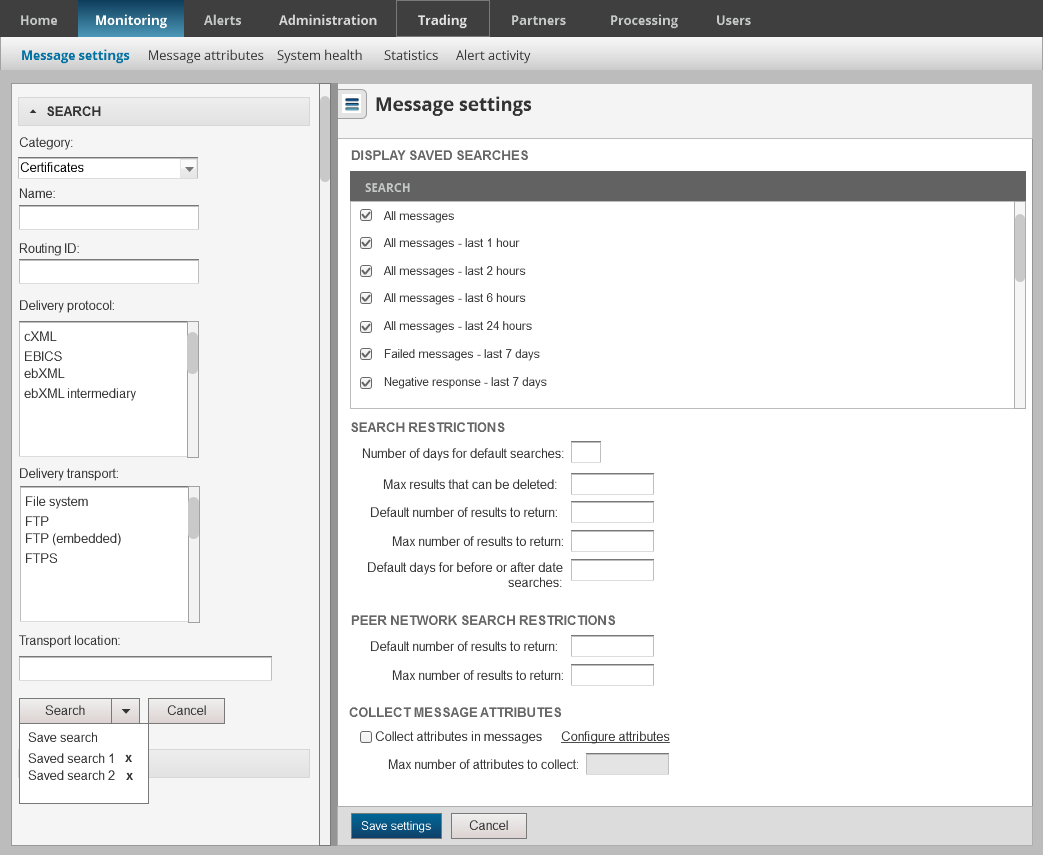Redesign B2B data integration application for Axway platform
Business problem: Axway's flagship application, B2Bi, had a high learning curve, cognitive burden, and high time-on-task.
Summary:
Initiated information re-architecture, reviewed and iterated with stakeholders, interviewed and collaboratively designed with customers, tested, identified top tasks and optimized navigation.
Challenges:
- difficult to change architecture with legacy code,
- huge feature backlog made it hard to get UX improvements implemented,
- needed to build team's trust in UX
Process & methodologies:
- created information architecture (moved whole pages to reduce dev impact)
- initiated customer collaborative design program
- identified all related tasks for each module
- created sidebar which doubled as side nav or search, depending on page,
- performed usability testing with customers and employees,
- iterative prototyping
Tools: Visio, video conferencing/Google Docs (for tests and surveys), Axure, support site search logs, code editor
Information architecture
I re-architected the product such that it had a minimal impact on development, moving whole pages instead of breaking them up. This was a design compromise to improve the overall experience. 
Customer collaborative design for the win!
I initiated a customer collaboration program and discovered some great ways to enhance the product. There was no way to categorize or remove tasks. Customers had hundreds of tasks that they were stuck with. We categorized tasks and added the ability to ignore and remove tasks. We also built a collapsible sidebar for information that needed to be accessed less frequently, while collecting the most relevant actions, recent searches, and other related areas.

Iterative design - earlier concept
Tried right and left sidebar and even two sidebars. Right sidebar emphasized content, but left sidebar worked best with show/hide menu icon. 
Final design
I initiated a customer collaboration program and discovered some great ways to enhance the product. There was no way to categorize or remove tasks. Customers had hundreds of tasks that they were stuck with. We categorized tasks and added the ability to ignore and remove tasks. 
